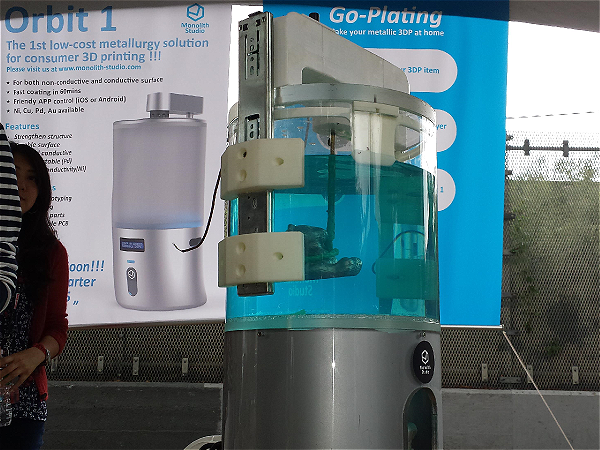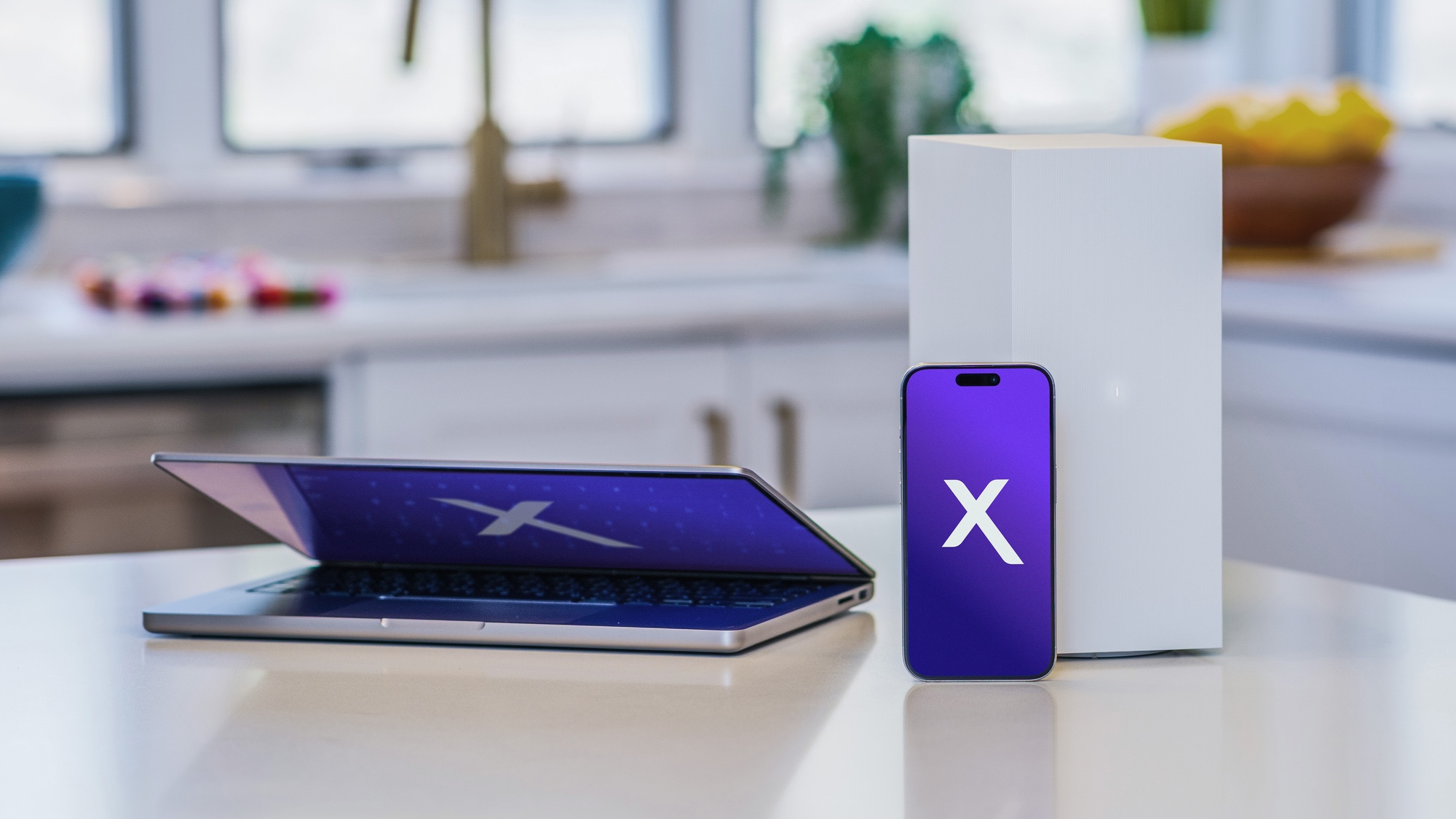Orbit 1 Device Coats 3D-Printed Objects in Metal
Here's metal more attractive: The Orbit 1 coats objects in metal, giving 3D printed objects extra flair or letting them conduct electricity.

3D printing in metal is not easy: it's expensive, time-consuming and usually requires a highly specialized printer well out of a consumer-friendly price range. The Orbit 1, on display this weekend at Maker Faire 2014 in Queens, New York, may just be the solution to this problem.
Developed by startup Monolith Studio, the Orbit 1 isn't exactly a 3D printer: instead, the device can coat objects in a metal finish, called Go-Plating. The creators told me they plan to put the device on Kickstarter this January, and expect to sell it for between $3,000 and $4,000.
MORE: Best 3D Printers 2014
The Orbit looks a little bit like a cross between a blender and a lava lamp: it mainly consists of a cylinder designed to hold a metal solution. Objects you want coated are placed inside this cylinder, suspended from a wire on the lid, and rotated inside the solution.
Right now the Orbit 1 works with four metals: nickel, copper, lead and gold. To use it, you first coat an object in a liquid form of the desired metal, then place it in a solution of that metal and other chemicals inside the Orbit 1. The machine then spins your object inside the liquid until the metal coating achieves the desired thickness.
At Maker Faire, Monolith Studios also demonstrated the Orbit 1's companion app, used to control the machine. The app has two modes: Smart and Expert. On Smart, the app will recommend settings for each use depending on the metal you're using and the thickness you want. On Expert, you can precisely set variables such as the number of rotations you want your object to make in the metal solution.
The app will also keep track of when you need to change the liquid solution in the Orbit 1 and when you need to clean it.
Sign up to get the BEST of Tom's Guide direct to your inbox.
Get instant access to breaking news, the hottest reviews, great deals and helpful tips.
In addition to decorative finishes, the Orbit 1's Go-Plating can also be used to make electronics, because nickel, copper and gold conduct electricity very well (lead less so). 3D-printed electronics are a fast-growing area of interest in the 3D printing community lately, and the Orbit 1 might prove to be one possible solution.
Though it's not a 3D printer itself, the Orbit 1 was designed to be used in conjunction with a 3D printer, to give 3D printed objects a metal finish. The creators also told me that Go-Plating should work on just about any material, not just 3D-printed plastics.
- 'Per Speculum' Art Reveals Drawbacks of Encrypted Email
- 15 Best Android Apps You're Not Using
- The Weirdest and Wildest 3D Printers
Jill Scharr is a staff writer for Tom's Guide, where she regularly covers security, 3D printing and video games. You can email Jill at jscharr@tomsguide.com, or follow her on Twitter @JillScharr and on Google+. Follow us @tomsguide, on Facebook and on Google+.
Jill Scharr is a creative writer and narrative designer in the videogame industry. She's currently Project Lead Writer at the games studio Harebrained Schemes, and has also worked at Bungie. Prior to that she worked as a Staff Writer for Tom's Guide, covering video games, online security, 3D printing and tech innovation among many subjects.
